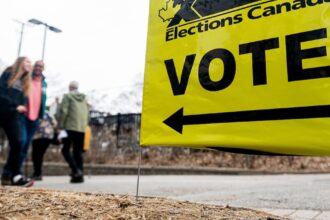In a surprising turn for Alberta’s financial landscape, the province’s year-end fiscal update released yesterday afternoon showed significantly better-than-projected numbers, marking a decisive shift in the province’s economic trajectory. Finance Minister Travis Toews announced a modest surplus of $2.4 billion for the 2024-2025 fiscal year, defying earlier projections that had anticipated a more constrained financial position.
“Today’s fiscal update represents the culmination of disciplined financial management and a recovering energy sector,” stated Toews during the press conference at the Alberta Legislature. “While we remain cautiously optimistic, these numbers reflect our commitment to responsible stewardship of public resources during uncertain global conditions.”
The improved fiscal position stems largely from unexpected resource revenue windfalls, with oil prices averaging $78 per barrel over the fiscal year—approximately $6 higher than conservative government projections. This translated to nearly $1.7 billion in additional resource revenue, providing crucial breathing room for provincial finances.
The provincial economy demonstrated remarkable resilience despite global headwinds. GDP growth reached 2.9%, outpacing the national average and exceeding the 2.3% forecast in the original budget. Unemployment figures also improved, dropping to 5.7% from 6.3% the previous year.
However, economists caution that structural challenges remain beneath these positive headlines. The fiscal update revealed that non-resource revenue growth remains sluggish at 1.3%, highlighting Alberta’s continued dependence on volatile energy markets for fiscal stability.
“While the surplus is certainly welcome news, Alberta still faces a fundamental revenue diversification challenge,” noted Dr. Emma Richardson, economist at the University of Calgary. “The province’s fiscal foundation remains vulnerable to external shocks in global energy markets that are beyond provincial control.”
Government spending increased by 3.2% year-over-year, primarily in healthcare and education. The health budget saw an additional $412 million allocation to address surgical backlogs and emergency department pressures, while education received a $278 million boost for classroom supports and curriculum implementation.
The fiscal update also confirmed that the Alberta Heritage Savings Trust Fund now stands at $22.8 billion, following a $1.1 billion contribution from this year’s surplus—the largest deposit in over a decade. The remainder of the surplus has been allocated to debt reduction, bringing Alberta’s net debt-to-GDP ratio down to 9.6%, the lowest among Canadian provinces.
Opposition finance critic Shannon Phillips criticized aspects of the government’s approach, arguing that “windfall resource revenues should be invested more aggressively in economic diversification rather than modest debt reduction during a period of historically low interest rates.”
Infrastructure investments fell 8% below budget projections, raising concerns about deferred maintenance costs and potential future liabilities. The fiscal update indicated that approximately $340 million in planned capital expenditures had been delayed to future years.
The province also reported progress on its “Alberta Jobs First” initiative, with 18,700 new private-sector jobs created since January. However, job growth remains concentrated in traditional sectors, with emerging industries still struggling to gain significant traction in the provincial economy.
As Alberta navigates its post-pandemic economic reality, the question remains: can the province translate today’s resource-driven surplus into sustainable, diversified economic growth that withstands future energy market volatility?


















